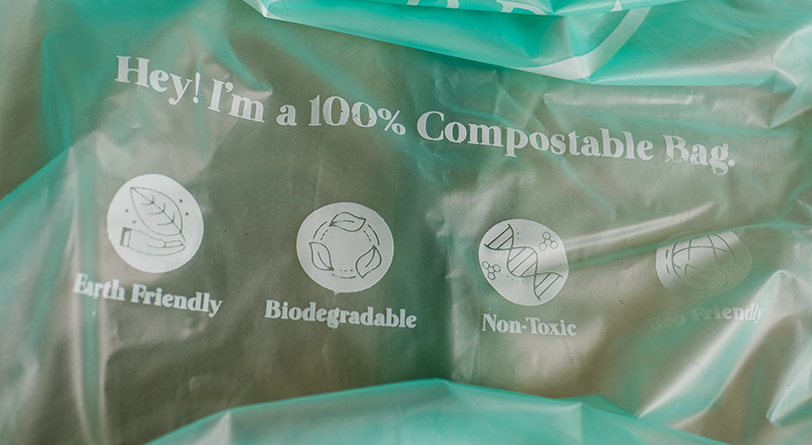Circular Compostable Solutions Help Create a Sustainable Future

The packaging industry is at a crossroads.
As new packaging sustainability laws take hold across North America, the call for circular solutions has become a necessity rather than a choice. Regulations such as California’s Senate Bill (SB) 1383 and emerging extended producer responsibility (EPR) laws in states such as California and Minnesota are reshaping the landscape, requiring brands and packaging converters to rethink their materials, supply chains, processes, and strategies.
Packaging converters and brands that fail to adapt will risk being left behind in a market increasingly defined by sustainability mandates driven by consumer demand.
However, those who embrace the shift to circular packaging stand to establish a distinct competitive advantage and capture increasingly more market share by leading the charge and meeting their customers’ rapidly growing sustainability needs.
Circular compostable packaging systems such as those championed by the Compost Stewardship Institute (CSI) provide a clear and actionable pathway to compliance and leadership in this new normal.
New Era of Packaging Regulation
California’s SB 1383 is the most ambitious organic waste reduction law in the U.S.
It mandates a 75% reduction in organic waste disposal by 2025, including food scraps and compostable packaging. This legislation requires not only the production of certified compostable materials but also their proper diversion and processing within industrial composting facilities.
Simultaneously, fast emerging EPR legislation is holding producers accountable for the entire life cycle of their packaging to increase recycling, composting, and reusability to reduce waste.
More states are expected to pursue similar EPR laws in 2025.
Circular Compostable Packaging
Circular compostable packaging systems are emerging as a comprehensive solution to meet these evolving regulations.
Unlike traditional systems that focus narrowly on material recovery, circular systems prioritize the complete packaging life cycle, from design to composting. These systems ensure compliance by eliminating plastic and promoting compostable alternatives while addressing broader environmental concerns such as microplastic pollution and landfill overflows.
The packaging industry has the chance to lead the way in creating a truly circular economy that prioritizes the health of our planet for future generations. Let’s seize this moment and make sustainable packaging the new standard.
Role of Circular Compostable Packaging
Circular compostable packaging systems offer brands and converters a complete turnkey solution, tools, and expertise needed to align with these new regulatory requirements.
These circular systems provide a comprehensive approach to ensure compostable packaging materials meet the stringent standards required by laws such as SB 1383.
Some of the key components of the circular packaging approach include:
- Certification: Ensuring packaging materials meet compostability standards such as ASTM D6400 or EN 13432, making them compatible with municipal composting facilities.
- Take-back programs: Establishing systems for collecting, sorting, and composting packaging materials.
- Composting effectiveness: Ensuring proper compost processing and landfill diversion.
This framework enables packaging converters to address California’s composting requirements. By implementing a take-back program and securing material certification, the converter not only achieves compliance but also may gain a competitive edge in the market.
Why Early Adoption Is Essential
Waiting to adapt to these regulations is not an option. Converters who act now will enjoy competitive advantages:
- Regulatory compliance: Delaying addressing these new laws risks penalties, lost business opportunities, and damage to your company’s reputation. Early compliance ensures a smoother operational transition and avoids disrupting growth.
- Competitive differentiation: Both brands and converters share responsibility. Brands seeking to elevate their sustainability advantage are increasingly demanding sustainable solutions. Converters that can offer certified compostable packaging will stand out as preferred partners.
- Cost management: Getting a plan in place now allows for a deliberate and efficient transition, avoiding costly rushed retrofits.
- Future readiness: With EPR laws and composting regulations gaining momentum across the U.S. and beyond, early adopters will be better positioned to navigate future requirements seamlessly.
Circular Packaging Is the New Normal
The shift toward circularity and compostable solutions is not just about meeting regulations. It’s about creating a sustainable future. This is the new normal.
Converters that fail to adapt risk more than noncompliance. They will lose relevance in a market increasingly driven by sustainability.
Fortunately, they don’t need to go it alone.
By embracing circular compostable packaging systems and partnering with circular compost support organizations such as CSI, converters can turn this challenge into an opportunity.
These solutions help ensure compliance with laws such as California’s SB 1383 and various state EPR regulations, while also positioning converters as leaders in the sustainability revolution.
The time to act is now.
The packaging industry has the chance to lead the way in creating a truly circular economy that prioritizes the health of our planet for future generations. Let’s seize this moment and make sustainable packaging the new standard.
Editor’s note: The credit for the feature image is Hakaroo Project/Shutterstock.com.
Rich Cohen is president and CEO of Elevate Packaging. He is also co-founder and adviser of CSI, a nonprofit organization dedicated to advancing circular compostable systems and helping brands, packaging converters, and municipalities align with sustainability goals and regulatory requirements.
NOTE TO READERS: We welcome submissions to this sustainability column. Please send your ideas to FlexPackVOICEcontent@theYGSgroup.com. Generally, articles can be up to 1,000 words, should be on issues important to the industry, and should not be self-promotional. Submitted photos will be considered for publication, as well.


